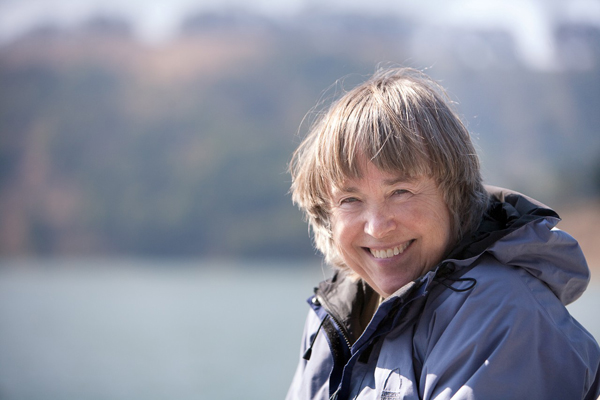One constant of Cindy Spring’s ever-changing life path has been her commitment to live her values. A one-time news broadcaster and holistic health practitioner with a deep dedication to activism, Cindy’s passion turned to local nature ten years ago following a stint as an organizer for Earth Day 2000. Next month, the program she co-founded in 2003 – Close to Home – will close out a decade of its local nature-focused speaker series with a final talk by Cindy entitled “We Are Nature, Too.”
BN – Where did you grow up? And what brought you to the Bay Area?
CS – I grew up in Detroit, Michigan, but came here in 1976 at the age of 30 after my then-partner and I decided Detroit was not where we wanted to end up. I’d been a broadcaster there previously, and there were lots of opportunities out here to help me explore new ways of being in the world and make new contributions in media.
BN – Tell us about Close to Home: How did it get started?
CS – In 2002, my friend Sandra Lewis and I decided that we needed to learn more about local ecology. “Earth literacy” was in the air and some friends in Palo Alto had started a program earlier that year called “Exploring a Sense of Place.” It had a concept of a curriculum of locally-focused monthly talks and field trips that folks committed to for a year. We took their version and adapted it to fit for us here in the East Bay (covering Alameda and Contra Costa counties). In searching for qualified speakers and field trip leaders, we found a treasure trove of naturalists here in the East Bay! We gained the co-sponsorship of Bay Nature and the Oakland Museum and later Lindsay Wildlife Museum and the Oakland Zoo.
The talks have been going on for 10 seasons now. At first we featured an eclectic mix of local ecology topics. In season four, we started Monday night talks on animals and then went on field trips to look for those animals. After three years we had run through all the animals, so we switched to general themes each year – for instance, the theme of our seventh season was water (during a drought year) and Season 10 has been “Listen to the Earth”, where we were delighted to have Bernie Krause, the renowned nature recordist, as one of our speakers. The final talk of the 10th season will be on March 4, and that will mark the end of our evening lecture series. But the field trips will continue.
BN – Is Close to Home something that could—or should?—be replicated anywhere in the world?
CS – I would certainly hope so. After about four years of doing the program, “Exploring a Sense of Place” put together a workbook, based on their and our experiences. It’s still available at www.exploringsenseofplace.org I think about a half dozen other like-minded groups have sprouted up in places like San Diego, Oregon, Washington State, and Colorado!
BN – What has surprised you the most over your ten years of organizing and attending the CTH lectures and outings?
CS – I was amazed how many other people were interested in learning more, getting up on Saturday mornings for the field trips, committed to learning more about plants, animals, dragonflies, mushrooms… It’s a whole community of earth lovers who’d rather be outdoors.
BN – Were there places nearby that you discovered through the series that you hadn’t known about beforehand? Tell us about one or two.
CS – I love Morgan Territory because it was home to several Volvon villages, according to naturalist Jim Hale who has taken us there many times. And Coyote Hills, for the same reason. Former East Bay Regional Park District naturalist Norm Kidder told us it was prime native peoples’ real estate – close to the hills for game, close to the water for fish, on a rise to seeing approaching strangers. When you go there it’s easy to imagine how living there must have been like paradise.
BN – What led you to decide to stop doing the lectures?
CS – We’ve had a really successful tenth year, exceptional presenters and large audiences—often more than 100 people. I feel like I’ve given the program and the community my best effort. Now I’d like to turn my attention to something more hands-on, where I know I’ve made an impact on a piece of the watershed or on a species’ well-being.
BN – What are your plans going forward?
CS – I’m trying not to think about it until after March 4, when the series will end with my own concluding thoughts: A Deeper Sense of Place: We Are Nature Too (see below). The field trip series will continue with 11 new trips starting in May. That’s in the planning stage.
BN – What advice do you have for young people who want to change the world for the better?
CS – I speak from years of activism experience – I’ve participated in over 100 demonstrations and once wrote for an underground newspaper. I would suggest, “Live your values.” If you say you care about the earth, then pay attention to your everyday actions – what you buy, how you live. Deepen you familiarity and sense of kinship with where you live.
Close to Home will continue to offer its year-long program of 11 Saturday field trips to some of the East Bay’s most interesting and beautiful places, led by expert naturalists. For info on field trips, please visit: close-to-home.org





